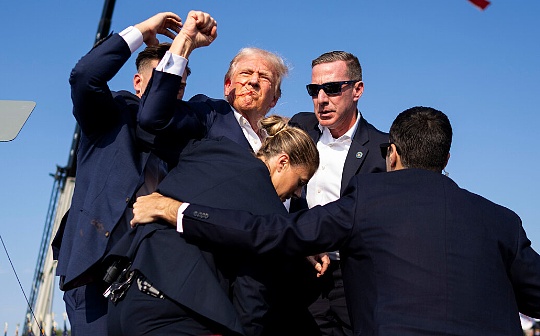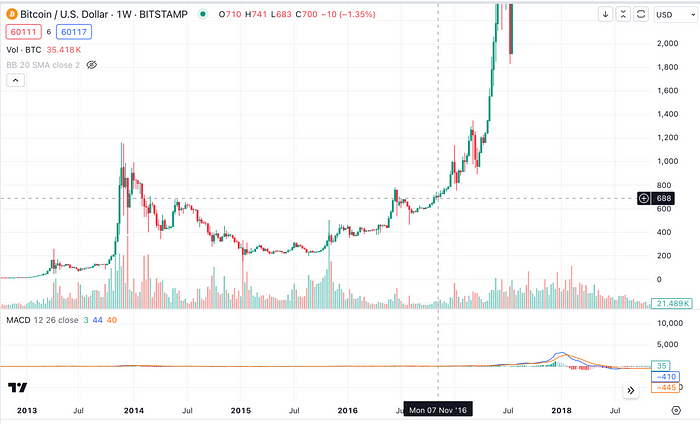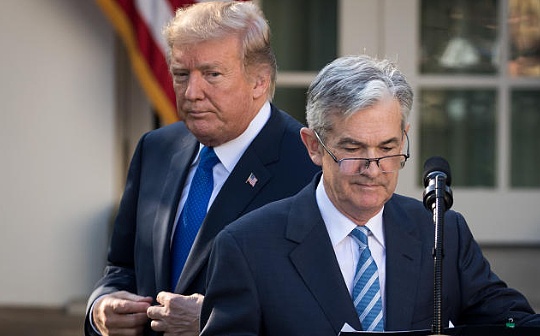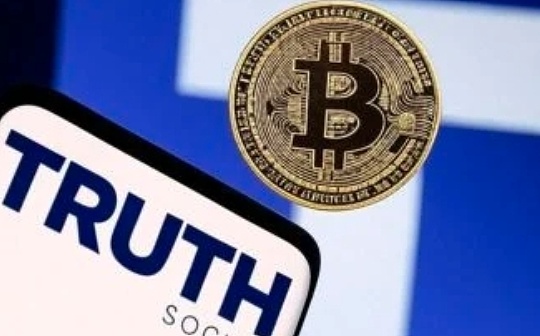
Source: Cycle Capital Research
1. General election overview
On June 28, Beijing time, Biden and Trump held the first debate in the 2024 election. Trump performed significantly and Biden’s poor performance caused general concerns about whether his mental state of seniority can be competent.Trump’s approval rating rose sharply after the debate.At the same time, Trump also has an overwhelming advantage in swing states, leading the way in the main seven swing states (North Carolina, Arizona, Georgia, Nevada, Wisconsin, Michigan and Pennsylvania).

There are three more critical moments for future elections:
1) National Congress of the two parties: The Republican National Convention from July 15 to 18, 2024, and the Democratic National Convention from August 19 to 22 will elect the party’s president and vice president candidates respectively.
2) Second round of candidate debate: September 10, 2024.
3) Presidential Election Day: November 5, 2024.
2. Major policy differences
Trump and Biden have relatively consistent views on infrastructure, trade, diplomacy, expanding investment expenditures and encouraging the return of manufacturing industries. The two have great differences in policies on fiscal, taxation, immigration and new energy industries.
1) Finance and Taxation
Trump advocates continuing to reduce corporate income tax from 21% to 15%, and does not advocate directly increasing fiscal spending; while Biden’s “Balancing Act” advocates raising tax rates for enterprises and the rich,The corporate tax rate is raised to 28%, while student loan exemption continues.Trump’s tax cut policy in the previous administration cycle boosted U.S. stock profits and promoted the return of overseas funds. The tax cut proposed in this round of elections was weaker than that year (the previous round of tax reform adjusted the tax rate from 35% to 21%).The boosting effect is also relatively weaker than that of that year.CICC estimates that the growth rate of the S&P 500 net profit in 2025 can increase by 3.4ppt to 17% from the market’s consistent expectations.
2) Immigration
The number of illegal immigration in the United States has increased significantly since Biden was sworn in 2021.Compared with Biden’s moderate immigration policy, Trump advocates continuing to tighten immigration policies, but relatively relaxes the requirements for “high-level” talents.Tightening immigration policies may weaken the momentum of U.S. economic growth and drive a re-acceleration of wage growth.
3) Industrial Policy
The two have major differences in energy and other fields.Trump advocates returning to traditional energy, accelerating the issuance of oil and natural gas exploration licenses, increasing traditional fossil energy development, etc. to ensure the United States’ cost leadership in energy and electricity, and may cancel green subsidies for new energy vehicles and batteries; BidenIt advocates continuing to promote the development of the clean energy field.
4) Trade Policy
Both Biden and Trump have implemented high tariff policies, which may push up the rise in U.S. imported raw materials costs and commodity prices, thus posing a resistance to the downward trend of CPI.Compared with Trump’s policies, Trump’s policies are more radical.Biden announced in May that tariffs on Chinese imported goods will be imposed. Biden’s additional tax scope only includes $18 billion in goods and some of the additional tax will be implemented in 2026.Trump said he would impose a benchmark tariff of 10% on goods entering the United States, and an additional tariff of 60% or higher on China, and would also impose “specific taxes” on certain regions or industries.

It can be found that Trump’s green arrows in the picture above are obviously more, and his tariff policies, domestic tax cuts and immigration policies are not conducive to the decline in inflation.
3. General characteristics of asset prices in the general election year
First of all, from the perspective of the whole year, there is no significant difference between the overall performance of the market and the change in the federal funds rate throughout the year.
By quarter and month, in the early stages of the election (mainly referring to the third quarter of the election), the change in the federal funds rate is significantly smaller than in other quarters, while asset prices show higher volatility during this period.The reason behind this may be that monetary policy tends to remain calm in order to avoid suspicion, and asset prices fluctuate due to uncertainty in the election results.In contrast to the seasonal pattern that is often stronger from October to December of non-election, the stock price performance in October before the general election is significantly weaker than that in non-election years.

4. Review of the market situation after Trump’s last round of election
On November 9, 2016, the preliminary results of the US presidential election were announced, and Republican presidential candidate Donald Trump won the presidential election and became the 45th president of the United States.At that time, Trump’s victory exceeded market expectations and caused asset price fluctuations. The market bet on “Trump Trade”. From November to December 2016, there were high U.S. Treasury bond interest rates, strong US dollar and strong US stocks, and the trading was expected to decline after digestion.The following are the price changes of various assets at that time (all are weekly charts).
U.S. Treasury yields fall after rising

Corresponding to the fluctuations in US Treasury yields, gold fell first and then rose

S&P rises

Nasdaq rises

BTC rises

The start time of this round of “Trump Trade” was greatly advanced. After the first candidate debate, the market’s expectations for Trump’s victory increased significantly, and the market began to plan for “Trump Trade” in advance.The 10-year U.S. Treasury yield rose to around 4.5% the second day of the debate.

In addition to the additional votes that Trump’s shooting on July 14 may bring to him, the most likely result is that Trump is elected president and the Republicans control both the Senate and the House of Representatives. It can be foreseeable that Trump’s shooting on weekends will beThe upcoming Monday US stocks brought an upward trend.
5. Summary
The impact of the US election on the market:
1) The election itself cannot be used as a reason for bullish trading. The simple logic that the Democratic Party needs US stocks to keep rising in order to win the election is not true;
2) The market has downside risks due to increased volatility around October of the regular election;
3) The main direction of the transaction election result is multi-CPI and multi-US bond interest rates (here “many” is relative to the downward expectations of the market, and its significance is to create resistance to the downward trend of CPI and US bond interest rates rather than absoluteRises), short gold, and long US stocks, but the strength is not as strong as when Trump was elected last time; more BTC (think BTC is more about following US stocks, and the divergence with US stocks is not sustainable in the long run & Trump cryptofriendly).








